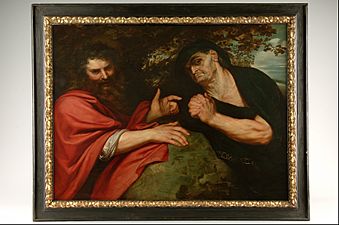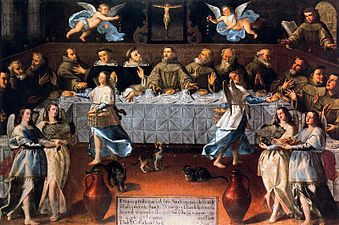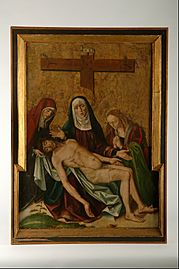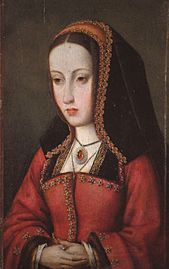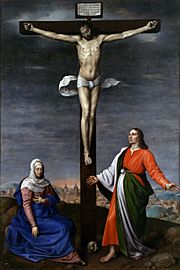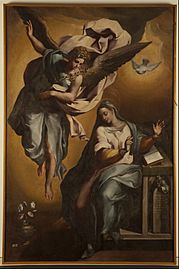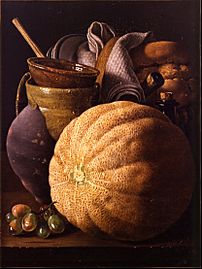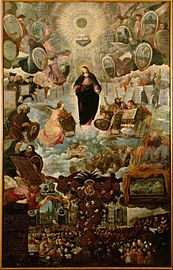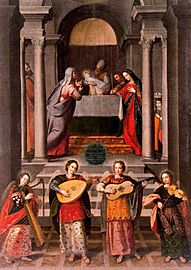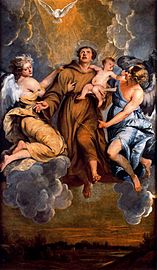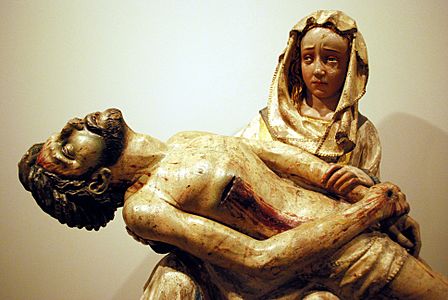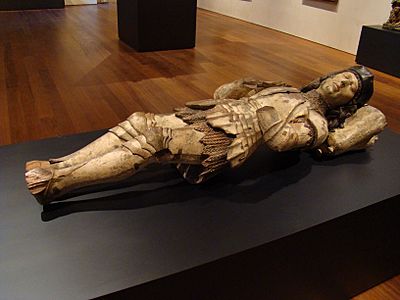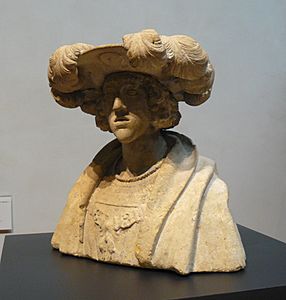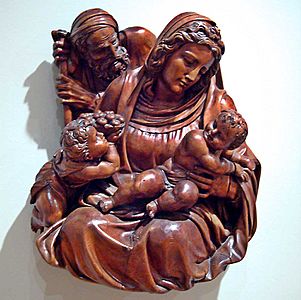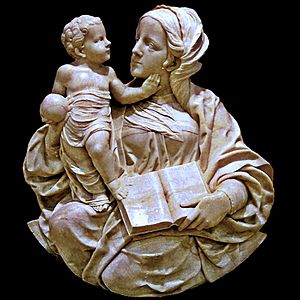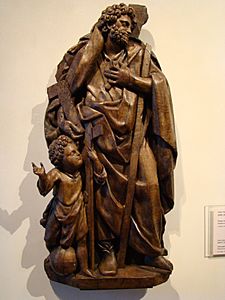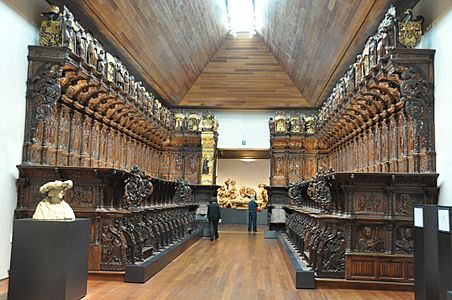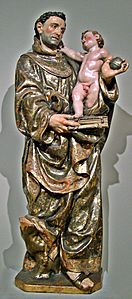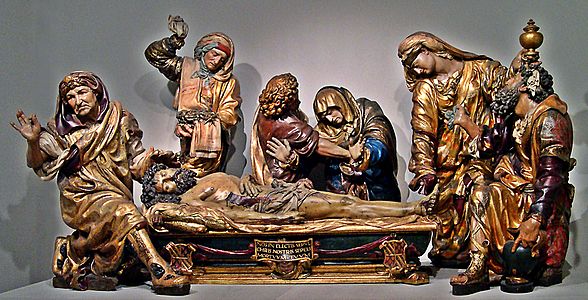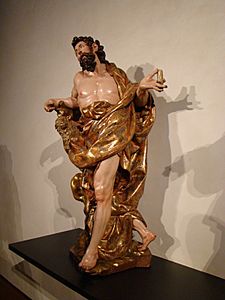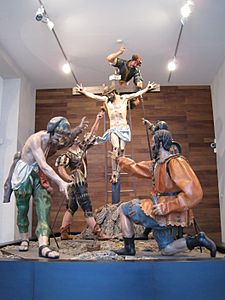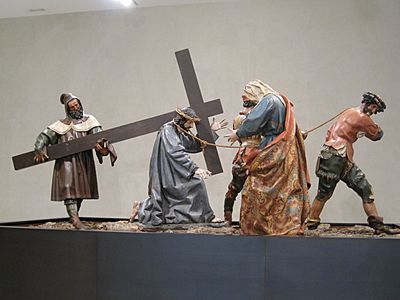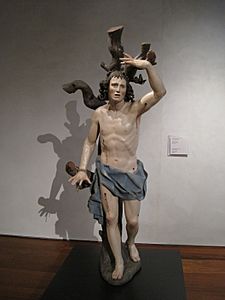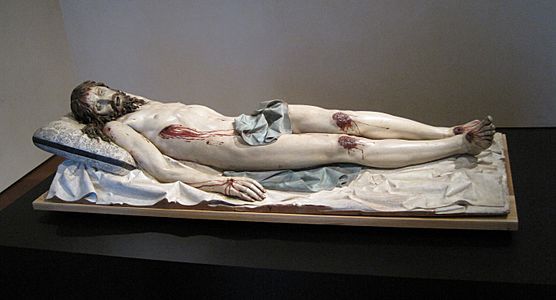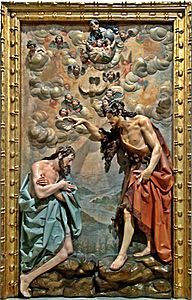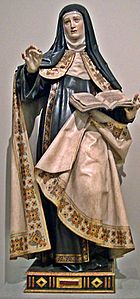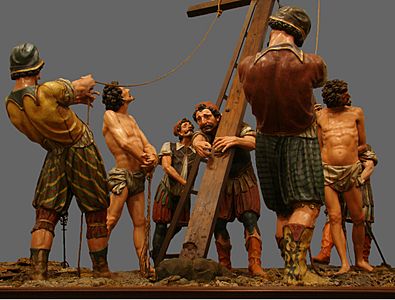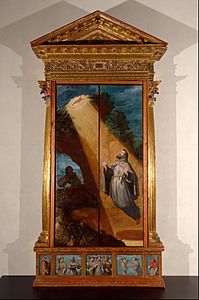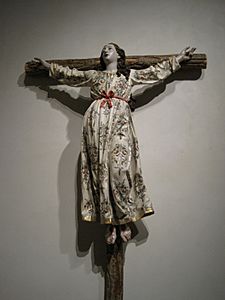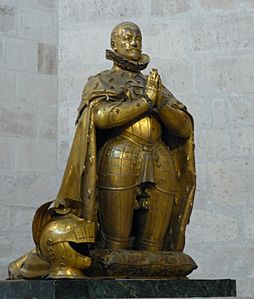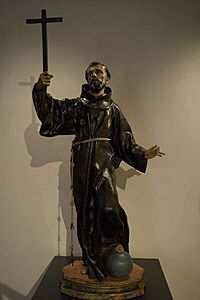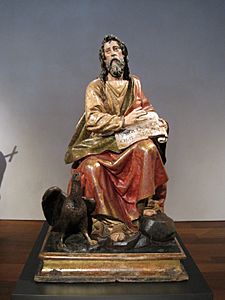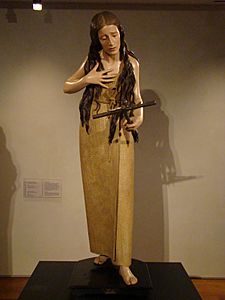National Museum of Sculpture, Valladolid facts for kids
| Museo Nacional de Escultura | |
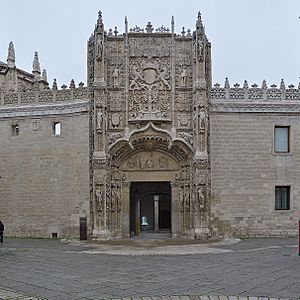
Main facade of the Colegio de San Gregorio
|
|
| Established | 1842 |
|---|---|
| Location | Colegio de San Gregorio, Valladolid, Spain |
| Type | Art museum, sculptural museum, Historic site |
| Visitors | 145.606 (2012) |
| Official name: Museo Nacional de Escultura | |
| Type | Non-movable |
| Criteria | Monument |
| Designated | 1962 |
| Reference no. | RI-51-0001422 |
The National Museum of Sculpture (Spanish: Museo Nacional de Escultura) is a special art museum in Valladolid, Spain. It focuses on amazing sculptures. It's one of Spain's main national museums and is part of the country's Ministry of Culture.
This museum has a huge collection of sculptures. These artworks range from the Middle Ages up to the 19th century. Many pieces originally came from churches and monasteries in the Region of Castile. The government collected these religious art pieces in 1836. Other parts of the collection were given as gifts, loaned, or bought by the government.
The museum first opened on October 4, 1842. It was called the Provincial Museum of Fine Arts back then. Its first home was the Palacio de Santa Cruz. Later, on April 29, 1933, it moved to the Colegio de San Gregorio. Today, it also uses two other historic buildings: the 16th-century Palacio de Villena and Palacio del Conde de Gondomar.
The museum displays artworks from the 13th to the 19th centuries. Most of these were made in Central Spain. However, some pieces also come from other places historically connected to Spain, like Italy, Flanders, and South America.
Some famous sculptures you can see include:
- Raising of the Cross by Francisco del Rincon
- I Thirst and The Way of Calvary by Gregorio Fernández
- Adoration of the Magi by Alonso Berruguete
- Lamentation of Christ by Juan de Juni
- Penitent Magdalene by Pedro de Mena
- Holy Sepulchre or passage of the Sleepers by Alonso de Rozas
During Holy Week in Valladolid, the museum lends out 104 sculptures. These sculptures are used in special parades by religious groups called brotherhoods.
Exploring the Museum's Art Collections
The National Museum of Sculpture is home to many incredible artworks. You can see both paintings and sculptures from different time periods. Each piece tells a story about art and history.
Paintings in the Collection
Even though it's a sculpture museum, there are some interesting paintings too. These paintings help you understand the art of different eras.
-
Democritus and Heraclitus by Rubens, 1603
-
Jan Brueghel - "Tentaciones de San Antonio Abad" - Google Art Project.jpg
Temptations of San Antonio Abad by Jan Brueghel (early 17th century)
-
Saint Francisco and Saint Domingo in the refectory by Felipe Gil de Mena (late 17th century)
-
Calvary by Antonio Moro, 1573
-
Still Life by Luis Egidio Meléndez, 1765
-
Allegory of the Immaculate Virgin by Juan de Roelas, 1616
-
Presentation of the Child in the temple by Diego Valentín Díaz, 1650
Sculptures Through the Ages
The museum's main focus is its amazing collection of sculptures. These works show how art changed over many centuries.
Medieval Sculptures (13th-15th Century)
These are some of the oldest pieces in the museum. They show art from a time long ago.
-
Bust of emperor Charles, young, anonymous, Flemish workshop, after 1520.
-
Altarpiece of St. Jerome by Jorge Inglés.
Renaissance Sculptures (16th Century)
The Renaissance was a time of great artistic rebirth. Sculptures from this period are very detailed and lifelike.
-
Holy family by Diego Siloe
-
Virgin with child by Felipe Bigarny
Works by Juan de Juni
Juan de Juni was a very important sculptor during the Renaissance in Spain. His works are known for their strong emotions.
Baroque Sculptures (17th-18th Century)
Baroque art is known for its drama, movement, and rich details. These sculptures often tell powerful stories.
Works by Gregorio Fernández
Gregorio Fernández was a master of Baroque sculpture in Spain. His figures are very realistic and expressive.
-
Gregorio Fernández: The Sixth Anguish (1616-1617).
Other Baroque Artists
Many other talented artists created sculptures during the Baroque period. Their works also show the style and themes of this era.
-
Saint John the Baptist by Alonso Cano, 1634.
-
Reliquary Retables of San Diego by Bartolomé Carducho, 1604-1606.
-
Saint Eulalia by Luis Salvador Carmona (mid-18th century).
-
Saint Francis of Assisi by Francisco Salzillo, 18th century.
-
Magdalene Penitent by Pedro de Mena, 1663-1664.
More to Explore
- Colegio de San Gregorio
- Museo de Escultura al Aire Libre de Alcalá de Henares
See also
 In Spanish: Museo Nacional de Escultura para niños
In Spanish: Museo Nacional de Escultura para niños


